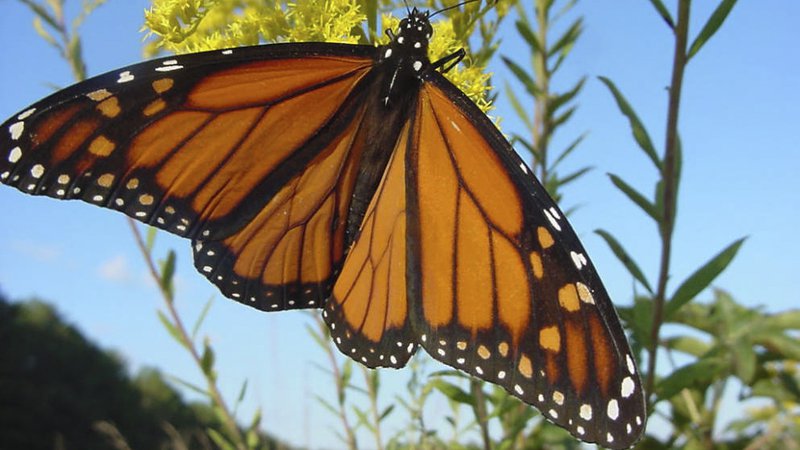Help AGFC follow the monarch migration
BY agfc
ON 09-06-2017

Sept. 6, 2017
The Arkansas Game and Fish Commission is seeking the public’s assistance with a new citizen science project to help the agency answer the question, “Where and when do people see monarch butterflies in Arkansas?”
The purpose of the project is to gain a better understanding of the distribution of monarchs in Arkansas and the timing of migration. Monarchs will begin migrating through Arkansas in late August/early September as they make their way from northern U.S. and Canada to their overwintering grounds in Mexico. Peak fall migration is typically around the first and second week of October, but this may change slightly from year to year depending on weather patterns. Monarchs will spend winter in Mexico. In spring, they will begin migrating north, making their way into Arkansas in early April. Many will stop and breed here wherever they can find milkweed plants (their host plant). Though the species may be found throughout the summer here, most monarchs will continue traveling north.
Data gathered from this project will help identify important breeding areas and migration corridors for monarchs. It will also help the AGFC better understand the timing of both spring and fall migrations. This will allow biologists to tailor conservation and management strategies for this species, which has seen significant population declines in the past several years.
Identifying monarchs is fairly easy given their striking orange and black coloration. However, the viceroy does mimic the monarch and beginners may need help distinguishing the two. The most noticeable difference is the presence of a black line across the veins on the hindwing of the viceroy that is absent in the monarch. The viceroy is also noticeably smaller than the monarch, but this may be difficult to discern without seeing the two side-by-side.
To report your sightings, visit the iNaturalist website and create a free account. Then navigate to the Arkansas Monarch Mapping Project page. Click on the red banner that says “add observations” and complete the information fields. You may also upload a picture, if you have it. If you upload a picture taken with a smartphone, the iNaturalist platform automatically gathers data on when and where the photo was taken. If you upload a picture taken with a traditional camera or if you did not take a picture, you can drop a pin where you saw the monarch using the Google map on the website.
People who want to report observations but do not want to use iNaturalist can send their observations directly to Allison Fowler at Allison.Fowler@agfc.ar.gov. The email should include:
- When it was observed (date and time)
- The location where it was found (GPS coordinates are best, but a detailed location description is acceptable)
- A photo for species identification verification (preferred but not required)
Contact Allison Fowler at Allison.fowler@agfc.ar.gov or 501-470-3650 for more information.
Recent News
Subscribe to Our Weekly Newsletter E-mails
Don’t miss another issue. Sign up now to receive the AGFC Wildlife Weekly Newsletter in your mailbox every Wednesday afternoon (Waterfowl Reports are published weekly during waterfowl season and periodically outside the season). Fishing Reports arrive on Thursdays. Fill in the following fields and hit submit. Thanks, and welcome!


